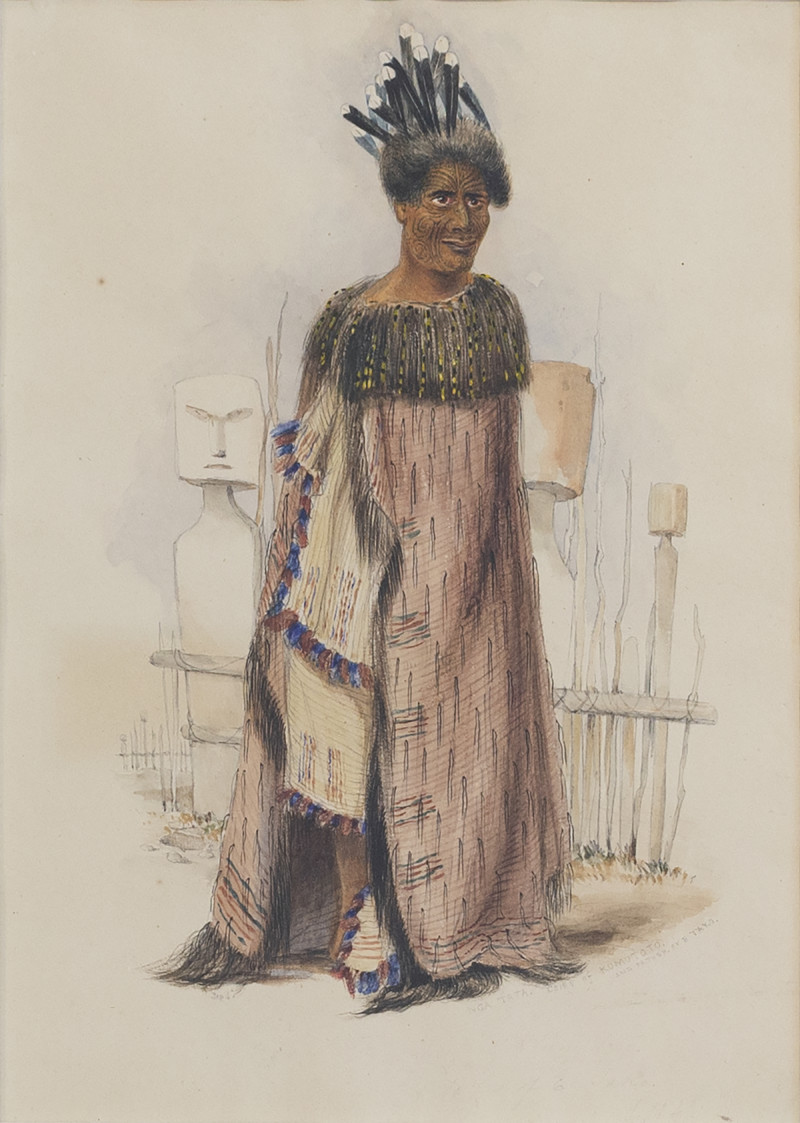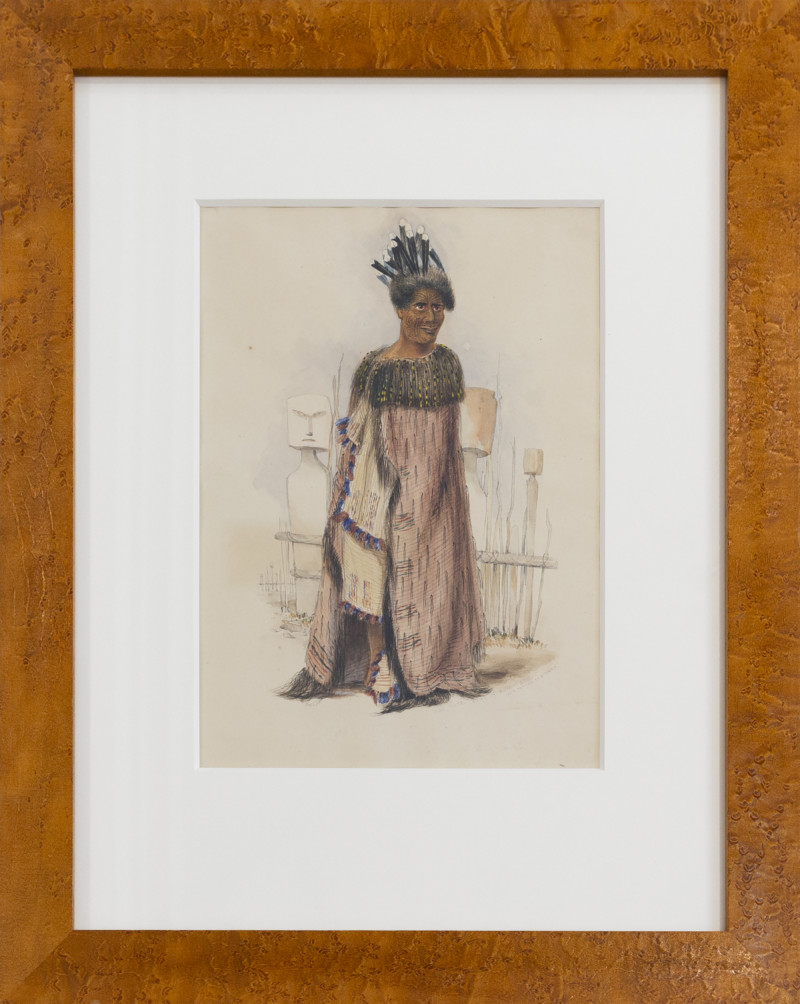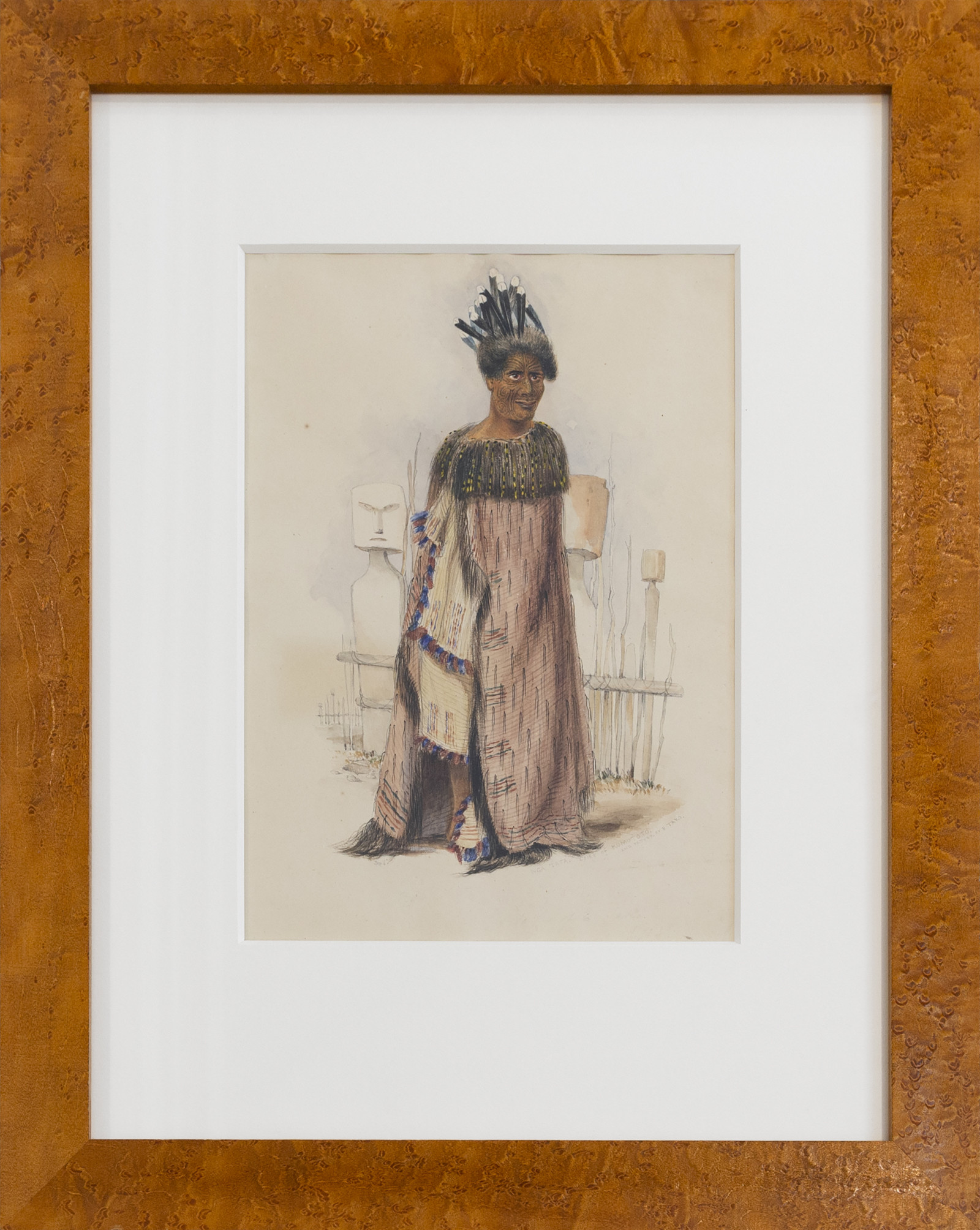ANGAS, George French;
Ngātata, Chief of Kumutoto and Father of Wī Tako
1844
Watercolour on paper
325 x 230mm (image); 575 x 460mm (frame)


A biography of Ngātata-i-te-rangi is available on Te Ara The Encyclopedia of New Zealand.
The following two texts were written for Te Huringa/Turning Points and reflect the curatorial approach taken for that exhibition.
Peter Shaw
George French Angas came to New Zealand in 1844, landing at Port Nicholson (Wellington). From there, he travelled to Porirua, where he met Te Rauparaha and Te Rangihaeata, sailed to Mana Island, then south to the entrance of the Wairau Valley. After an eight-day voyage up the North Island he arrived at Tāmaki Makaurau, where he visited Ōrākei and other pā. In the company of Thomas Forsaith, Sub-Protector of Aborigines, he travelled through the Waikato to Taupō, all the while making drawings and watercolours. These formed the basis for the lithographs illustrating his journal Savage Life and Scenes in Australia and New Zealand, published in 1847. He left New Zealand at the end of 1844.
While regarded as accurate in his depiction of Māori artefacts, clothing and dwellings, he tended to Europeanise figures and to reduce his subjects to stereotypes. Michael Dunn has referred to his representations of Māori as ‘misleading confections’. Despite this, they are still a valuable record of a European view of a ‘savage’ people.
Of the chief Ngātata-i-te-rangi, Angas wrote that he was ‘an atrocious cannibal … notorious for his sanguinary deeds of cruelty’. He also pointed out, ‘He has six toes on his left foot: a peculiarity that characterizes Rauparaha [sic] and several other chiefs.’
Jo Diamond
The Māori cultural subject matter of Angas’s watercolours is intriguing. While in the past portraits of unidentified Māori people graced gallery walls and failed to attract serious engagement in scholarly texts because they somehow failed to qualify as ‘fine art’, those days are now gone.
The tāniko and ‘pom-pom’ embellishment of the kākahu (cloak) that the girls ‘E Rangi’ and ‘E Tohi’ wear are studied with interest by modern Māori weavers, as they appear to record changing weaving trends of the time, including the incorporation by Māori weavers of wool and other introduced fibres. The story of both wearers and makers remains important yet still to be fully told today.
In painting the chief Ngātata, Angas has constructed an image constrained by the current eurocentric notion that non-European races are less refined and more savage in their behaviour than their European counterparts. This attitude is reflected in the title of his 1847 book, Savage Life and Scenes, which reflected racist stereotypes that lend themselves to inaccurate caricature. Thus, Ngātata is made to appear pathetic, quaintly yet curiously deficient in social standing, demeanour, and morals—a cannibal, rather than a respected chief. Angas was able to distribute his work internationally, relying on this evocation of ‘savagery’.
It is more valid to consider Ngātata as he was: one of a long line of rangatira, whose standing, like that of many from a ruling class including those of Europe, relied more heavily on mana, political acumen and charisma than on savage atrocity.
Inscriptions
NGA TATA. CHIEF OF KUMUTOTO. AND FATHER OF E TAKO. [l.r.]Exhibition History
Te Huringa/Turning Points: Pākehā Colonisation and Māori Empowerment, Sarjeant Gallery Te Whare o Rehua, Whanganui, 8 April to 16 July 2006 (toured)
Provenance
1995–
Fletcher Trust Collection, purchased November 1995
–1995
Unknown


